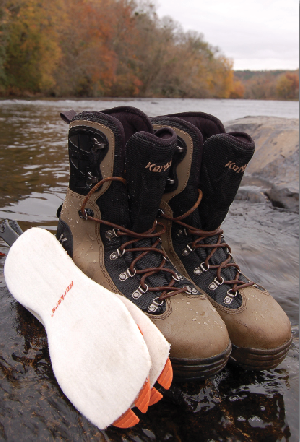
Given the bewildering array of magnificent sporting equipment available today, what does best really mean? We think it’s a product that tries a little harder, does something a little better, is a little more elegant—is somehow just more satisfying than similar products.
Like Gray’s itself.
Each year our editors review hundreds of new rods and reels, shotguns and rifles, boots and jackets, and each year a few stand out in one way or another: a fly rod that comes alive in your hand, a jacket that becomes a part of you, a shotgun that you mount and swing—and that makes you just sigh.
A few times a year our editors fall in love.
<!nextpage>
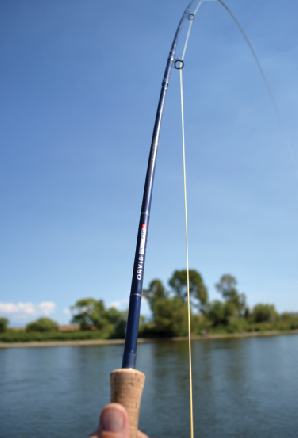 ANGLING: Orvis Helios 2 Fly Rods
ANGLING: Orvis Helios 2 Fly Rods
The Helios 2 is the newest in Orvis’s series of lightweight, high-performance fly rods. This line began in 2006 with the Zero Gravity, progressed into the original Helios, and is now reincarnated as the Helios 2. While I enjoyed fishing both previous versions, neither was as good as this. I fished the 6-weight Helios 2 more last year than any other new rod in my quiver. It is responsive, smooth, straight-tracking, crisp, and extremely efficient. And it is by far the lightest fly rod I’ve ever fished, which allows me to be on the water longer with less fatigue. As a fan of longer rods, I often tire handling a 9½- or 10-foot stick all day. The difference in my stamina with the Helios 2 was apparent. This rod is also surprisingly durable. In addition to the expected rainbow and brown trout (including some large ones), I put the screws to silver salmon, sockeye salmon, and even heavy carp on this rod. The 6-weight handled them all, providing plenty of backbone to turn the fish, and it didn’t splinter or crack. It even survived being fished by numerous clients over the past season, the ultimate test of any fly rod. If you’re in the market for a new all-purpose fly rod, the Helios 2 deserves serious consideration. www.orvis.com
<!nextpage>
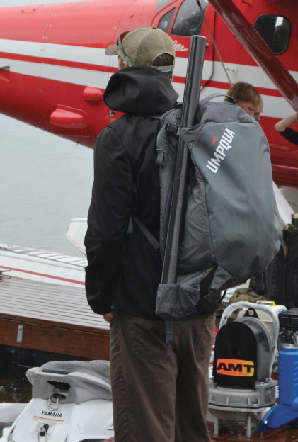 ANGLING: Umpqua Deadline 3500 Wet/Dry Duffel Bag
ANGLING: Umpqua Deadline 3500 Wet/Dry Duffel Bag
This year Umpqua released a whole line of new bags and packs that are truly innovative and functional. Rather than just changing colors or adding frivolous compartments, Umpqua teamed up with designers from other outdoor industries to bring fresh thinking to fishing bags. While I greatly enjoyed the company’s new Famous 2500 boat bag, it was the Deadline 3500 Wet/Dry Duffel that shone the brightest. Every element about this pack is well thought out. First, the zippers are on the back of the pack (where it rests against your body). The front of the pack is waterproof, rubberized tarpaulin, so when you take your pack off streamside and drop it down in the mud or water, everything is protected. The Deadline doesn’t have assorted specialty pockets designed for specific tools, the engineers at Umpqua having figured that you should decide how to use your carrying capacity yourself, something I appreciate. Instead, there is massive internal storage with two separate access points: one for wet gear, and one for dry. Though these two share the same space, an adjustable waterproof membrane prevents the wet from sullying the dry. The bag also has sleeves to hold two fly rod tubes that can be stowed behind a zipper when not needed. I have used this bag for serious day trips and as a carry-on for travel. It performed equally well in both roles. www.umpqua.com
<!nextpage>
I have a bit of a fetish for situations that demand full-flex fly rods. Highly selective spring creek or tailwater trout that require long leaders, fine tippets, accurate presentations, and soft landings are some of my favorite places. In such fishing conditions, it’s a huge advantage to have a specialized rod in your hands. Is it possible to catch those fish with a generalized, all-purpose 5-weight? Yes, of course it is. But if obtaining trout is purely a necessity, you might consider visiting the supermarket rather than a technical fishery. My favorite completely unnecessary fly rod this year is Sage’s Circa. While Sage is best known for aggressive, fast-action rods, it went the opposite direction in designing the Circa; this rod flexes to the cork with each cast. The Circa also uses the same Konnetic technology as Sage’s ONE series, which means that, despite the flex pattern, it is surprisingly crisp and unbelievably accurate. Unlike many bamboo, fiberglass, and noodley graphite rods, the Circa has absolutely no tip-bounce. I fished the 8-foot-9-inch 4-weight, and it turned over 14-foot leaders with accuracy and ease, protected wispy tippets against large fish, and also had the power to roll-cast a grasshopper with a weighted nymph dropper. Even though you might not need one, you’ll be glad you own one the next time you’re casting to finicky risers. www.sageflyfish.com
<!nextpage>
 ANGLING: Orvis Guide Sling Pack
ANGLING: Orvis Guide Sling Pack
Outside of fly rods, I think fishing packs and bags have seen the most interesting innovation in recent years. Orvis’s Guide Sling Pack was my preferred day-fishing system last season. I tend to have a problem with overpacking when I go fishing. While I realize this is my own issue and not that of the gear companies, I appreciate it when they design bags that allow me to indulge my pack rat nature. Most slings push the load out from your body, where it’s heavy and unwieldy to carry. The Orvis Guide Sling, however, has a cavernous main pocket and an elongated design that spreads out the weight vertically and holds it close to your body. The Guide Sling attaches with a comfortable, padded shoulder strap and includes a “sternum strap” that locks the pack securely on your back when you’re not rummaging through it. This bag has enough room for plenty of fly boxes, all your terminal gear, a raincoat or camera, and a water bottle. So if you’re like me and feel compelled to bring everything with you, you can do so. The sling also comes in a smaller size for those who aren’t so gear excessive. www.orvis.com
<!nextpage>
 SHOOTING: Galazan Inverness O/U Shotgun
SHOOTING: Galazan Inverness O/U Shotgun
Over the past 20 years, Tony Galazan’s Connecticut Shotgun Manufacturing Company has grown from a small shop with a half dozen craftsmen to a modern three-acre factory with 100 employees producing the finest shotguns ever made in America. Aside from manufacturing the original Fox, Parker, and Winchester Model 21 side-by-sides, Galazan makes his own boxlock SxS (the RBL) and two different sidelock over-and-unders (the Galazan and the A-10). Now he has invaded the decidedly crowded boxlock O/U market, dominated for years by Italians. Galazan’s Inverness breaks no new technological ground, but it does offer extremely high quality at a much lower price than any comparable European gun. Like all Galazan’s guns, no Inverness is shipped until it has made one (or more) trips to the testing range, and come back certified perfect after shooting several hundred shotshells. Such quality control is conspicuously lacking in many European brands. The standard Inverness is a sleek round-action with tasteful scroll engraving, but from there the sky’s the limit. At present, the Inverness is available only in 20-gauge, but for field guns, 20 gauges probably outsell all other over-and-unders combined. The Inverness is a delightfully compact gun that functions to perfection in every respect, from opening and closing, to trigger pull, to the timing of the ejectors. Every gun feels as if it just left the loving hands of a skilled gunmaker. Which, of course, each one has! www.connecticutshotgun.com
<!nextpage>
 SHOOTING: Meopta Meopro 6 x 42 Riflescope
SHOOTING: Meopta Meopro 6 x 42 Riflescope
Central Europe, from Germany through Austria and into the Czech Republic, has a long history of glassmaking, with many companies technically independent but, in reality, intertwined both historically and commercially.Meopta is a Czech company that has been in business since the 1930s, making a wide range of optical products that aren’t well known in the United States. Also not well known: Meopta is the subcontractor for many of the bigger, better-known names for some specialized processes and links in the manufacturing chain. In other words, the Meopta name may not be familiar, but there is no doubt about the quality. Meopta’s line of riflescopes occupies a definite niche, combining proven European optical quality with compact and highly usable designs, at a price roughly half what you would pay for the bigger names. In riflescopes, usability is no small concern, as the product lines of many European brands are now dominated by scopes that, while optically and technologically superb, are bulky, heavy, and complicated. Meopta scopes feel like the European scopes of years ago, when the German makers were trying to break into the American market and sold glass that made you feel you could, in Elmer Keith’s words, “see the Promised Land.” The particular scope that prompted this paean of praise is Meopta’s fixed-power Meopro 6 x 42, a one-inch-tube model that will appeal to Americans wanting a scope for a mountain rifle that is rugged, slim, handsome, and delivers sparkling optics. www.meoptasportsoptics.com
<!nextpage>
The Mauser company has enjoyed a long and eventful life since its founding in Oberndorf, Germany, 140 years ago. Today, as part of the Blaser group, Mauser is carrying on its tradition of innovation, manufacturing hunting rifles in the Bavarian Alps that set a standard for everyone else.
With its newest model, the M12, however, Mauser is taking an unusual approach. Instead of simply making the best rifle possible, Mauser’s goal was to produce a rifle of the best design, manufactured to the highest CNC standards, while keeping it economically competitive with such rivals as Browning and Winchester. The M12 retails for $1,699, a price that puts it right in the low midrange. But in terms of quality, the M12 is anything but low midrange. Its smooth bolt action is a logical descendant of the company’s hallmark Model 98. The mechanism is a turn-bolt with three locking lugs and a three-position wing safety. With its walnut stock, it is attractively traditional; the magazine is a detachable box, and the receiver is profiled to accept standard scope bases. The trigger is a revelation: out of the box, it delivers a crisp pull of just 2.5 pounds, with no discernible creep. The M12 is consistently accurate (one-inch five-shot groups) with a variety of factory ammunition. The wonder of the M12 isn’t that Mauser can make such a remarkable rifle, but that it can produce one and sell it for such a remarkably low price. www.mauser.com
<!nextpage>
 SHOOTING: Leica Geovid 10 x 42 HD-B Binocular
SHOOTING: Leica Geovid 10 x 42 HD-B Binocular
When Leica introduced its first binocular with integral laser range finder in the 1990s, little did we expect it to become, as it evolved, our first three-time Gray’s Best winner. The Geovid was the first of its type and has remained, by several measurements, also the very best. In the intervening two decades, the Geovid has changed in several ways, becoming lighter and more compact at the same time as its operation was simplified and useful features and functions were added. The latest Geovid is the HD-B, a 10 x 42 binocular no bigger or bulkier than any other quality 10 x 42. It has Leica’s trademark superb optical quality and could be carried, all day in perfect comfort, like a standard binocular. But it’s more than a binocular; it is, in a way, an optical computer, employing a tiny memory card tucked safely into the battery compartment. This card holds ballistics information related to your rifle, and allows you to calculate trajectory, holdover, and the practical distance to target based on the angle of the shot, the temperature, and the atmospheric pressure. But never mind that. If you’re not a computer geek, you can use the Geovid as an optically superb, Luddite-proof laser range finder that is almost pathetically simple to operate and provides either stationary readings or running distances on a moving target. You need only remember to push a button—easy even with gloves on, in pouring rain, in the throes of buck fever. us.leica-camera.com
<!nextpage>
Of all the innovations in wading-boot technology during the past decade, few have been as unique or functional as Korkers’s OmniTrax interchangeable outsole. This clever traction system allows you to go from felt to rubber, cleats, studs, and more in a matter of seconds, without needing to invest in multiple boots for different situations. At the top of the OmniTrax lineup is the bombproof Korkers Guide Boot ($210), or KGB for short. My experience with this boot is limited to the Savannah River shoals, but I can honestly say that our local water presents some of the most treacherous wading I’ve ever done. And the KGB handles the slick, angular, ankle-breaking riverbed like an all-terrain vehicle. Korkers’s interchangeable soles are remarkably easy to swap out, and once in place there is zero slippage. It feels like one-piece construction underfoot. But the biggest factor in taming tough water is the KGB’s extra-tall ankle support. A thermoplastic urethane (TPU) cage frames the boot’s upper for added stability. Rustproof, locking lace grips and boot laces you could hang a whitetail buck from add to the KGB’s indestructible rating. Triple-stitched seams complete the ruggedness, while 100 percent waterproof materials and drainage ports integrated into the soles reduce water retention. They take a little breaking in, but after a few trips you’ll have ski boot–like security with hiking-boot comfort. www.korkers.com
<!nextpage>
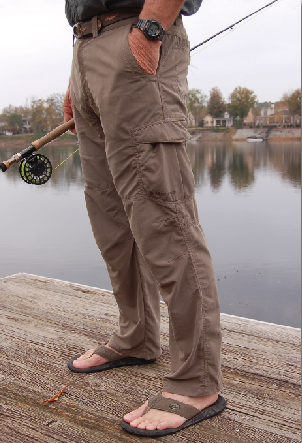 APPAREL: Redington Shuttle Pant
APPAREL: Redington Shuttle Pant
From rods to waders to apparel, Redington is well known for its fly fishing products. Lately, though, I’ve been using their excellent Shuttle Pant ($60) for nearly everything but fishing. This garment is perfectly adaptable to a variety of outdoor pursuits, having seen service on my calendar everywhere from early squirrel season and September whitetails to ultralight camping trips where packing more than one pair of pants is a fool’s burden. They’d be perfect on a dove opener, or for Western driftboat fishing, where the weather can change in minutes. What you probably won’t do is wear them on a tropical flat, where they’re just too mid-weight. But for everything north of Key West and just past August, they’re extremely versatile. For such a durable-weight fabric, they’re also very fast drying. A winged, gusseted crotch and articulated knees add comfort, fit, and mobility, while the double-layer reinforced seat offers protection for all kinds of knocking about. A concealed, zippered side pocket is handy for keys and pocket money, and two cargo pockets at the thighs add capacity but lie flat when not in use. A zip fly and sturdy button closure at the waist complement bar-tack belt loops and mesh-lined hand pockets to create an excellent all-around outdoor and travel pant for a down-to-earth price. www.redington.com
<!nextpage>
 APPAREL: Smith Optics Chroma Pop Dover
APPAREL: Smith Optics Chroma Pop Dover
The first time you walk outside and slide a pair of Smith Optics Chroma Pop sunglasses across your temples, the change of perspective might seem downright narcotic. The grass is greener. The reds are warmer. And the blues will make you happy. Smith’s explanation for this “whoa” effect is the elimination of what it calls color confusion. To wit: all visible light is composed of red, green, or blue, each of which has its own wavelength. Where those waveforms intersect, the eye has trouble distinguishing between the three primary colors. Chroma Pop filters light at those intersections to eliminate confusion and make each color more discernible. The result is greater color definition and vividness. Chroma Pop is currently offered in select frame styles, and I wear the new Chroma Pop Dover ($209) with Havana frames and polarized brown lens (although polarchromic copper might have been a better all-around choice for fishing). Smith’s Evolve frame material is super light and features hydrophilic Megol nose and temple pads for all-day comfort. As you perspire, the Megol becomes tacky and keeps the shades from sliding around during active sports. Chroma Pop lenses are currently available in 21 frame styles with multiple lens tints for each. www.smithoptics.com
<!nextpage>
 APPAREL: L.L. Bean No Fly Zone Shirt
APPAREL: L.L. Bean No Fly Zone Shirt
Let’s be truthful. A garment’s cut and color matter to even the most weathered woodsman. So when I first saw someone wearing the new L.L. Bean No Fly Zone Shirt ($79) on a trip to Nelson’s Spring Creek last summer, the first thing I noticed was that it just looked good. The tailored fit features sleek pocket designs and low-profile vertical venting rather than the billowing cape of old-school fishing shirts. And the hunter green color—which too often runs more toward kindergarten construction paper or Christmas card hues—was perfectly centered within the sportsman’s verdant spectrum, somewhere between forest and sage. Best of all, the shirt functions as well as it looks. Burlington’s No Fly Zone fabric protects against biting bugs while offering UPF 50+ sun protection. The fabric is a wrinkle-free nylon/polyester blend that holds form after rough treatment, and it dries quickly. This isn’t truly a tropic-weight shirt for the likes of Belize or Los Roques. It feels more at home on a salmon river than on the bonefish flats. But Bean’s designers certainly have fly anglers in mind, with four vertical zip pockets that offer plenty of storage, roll-up sleeves with button snaps, and extended cuffs and collar to protect the back of your hands and neck from excessive sun. Oh, and it also comes in blue. www.llbean.com
<!nextpage>
 ACCESSORIES: Fishpond Westwater Large Rolling Duffel
ACCESSORIES: Fishpond Westwater Large Rolling Duffel
It doesn’t stand upright, but the Westwater Large Rolling Duffel from Fishpond does stand up to rain, rough terrain, or most anything else that expedition luggage might face. The PVC outer shell repels water, and the main-compartment zipper is water-resistant. The wheels are lugged and larger than you’ll find on most rolling luggage, so it pulls easily off pavement. There are a few useful pockets inside and one on the outside, a back stiffener, and a retractable handle. It’s a sporty bag, yet capable of enduring significant mishandling. But it’s the duffel’s ability to minimize aggravation that earns it a Gray’s Best. First, it weighs only 8½ pounds, which helps reduce fretting about what to pack or what not to pack. Stuff it with 41 pounds’ worth of gear, clothes, and necessities, and you’ll still clear the 50-pound weight restriction most airlines charge for a “handling fee.” Second, it opens more like a trunk than like a duffel. Instead of a big mouth on one end or a zipper bisecting the top, the Large Rolling Duffel’s opening runs around three sides. When it’s open, the top lifts and falls back to reveal the bag’s contents, into all four corners, reducing all that digging common with large-capacity duffels. If sporting travel is on your itinerary, you need this bag. www.fishpondusa.com
<!nextpage>
 ACCESSORIES: Garmin Delta Sport
ACCESSORIES: Garmin Delta Sport
I recently upgraded my dog collars and now run Garmin Alpha 100s on all my pointing dogs. While this unit is fantastic in the field, I wanted something a bit more compact for my yard work. So I jumped at the chance to test-drive a new Garmin Delta Sport. The unit is compact, lightweight, easy to operate, and can be used to train up to three dogs at a time. It offers 18 levels of momentary and continuous stimulation as well as both a tone and a vibration setting. The collar offers five correction configurations, which enables you to select the option best suited to your dog’s temperament. Another new feature incorporated into this collar is Garmin’s new BarkLimiter technology, which gives you the power to target and correct unwanted barking without the fear of overcorrection. When you purchase a Garmin Delta Sport, you’re essentially buying both an e-collar and a bark collar in the same unit. This collar is 100 percent waterproof, comes with long-lasting rechargeable lithium-ion batteries, and is designed to be effective on all breeds of dogs. I was looking for a good all-purpose collar, and I’ve found that in the Garmin Delta Sport. www.garmin.com —Chad McClure
<!nextpage>
 ACCESSORIES: Blazer Products Eagle Butane Lighter
ACCESSORIES: Blazer Products Eagle Butane Lighter
A windproof, waterproof lighter isn’t a new concept. The market is populated with a wide variety of such lighters, but many are too bulky for easy carry, or they’re constructed of fragile plastics that stop working when you need them most. The construction and performance of Blazer’s Eagle Butane Lighter counter all that. Its slim profile and rounded edges ride comfortably in a pants pocket, and its metal casing and parts withstand both abuse and frequent use. Its windproof properties are handy when you need to light a campfire on a cold, windy night, or even when you just want to light a pipe without rolling up the windows. Further, the Eagle can take a dunking. One morning, while fishing the shoals of the Savannah River, I found some shallow current and dropped the lighter in the water. It hit with a splash and settled about 18 inches to the bottom. I made a few casts and returned to the lighter, popped it open, pressed the trigger, and a flame shot out as always. I’ve since tested it on longer submersions, and it’s always fired up immediately. Months later, it’s still firing away. www.blazerproducts.com
<!nextpage>
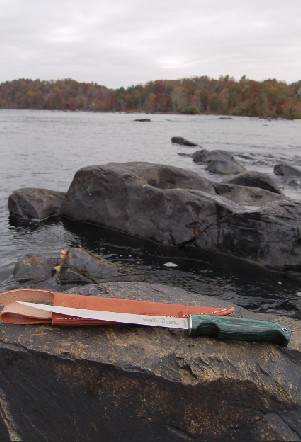 ACCESSORIES: White River Knife and Tool Fillet Knife
ACCESSORIES: White River Knife and Tool Fillet Knife
Over the past few years, I’ve given Gray’s Best to fixed-blade skinning knives, a folding-blade skinner, and a pocketknife. I was thinking about skipping knives for a few years when Steve Walburn showed me the fillet knives from White River Knife and Tool. These knives are so handsomely constructed that they simply couldn’t be ignored. The handles, made of either cork or DymondWood (32 layers of birch veneer), look like something you’d see in a custom knife shop, and go a long way toward separating these fillet knives from the herd. Aesthetics, of course, are worthless if the function fails to follow, and the White River fillet knife excels at its function. The thin blade, made of 440C stainless, cuts a fine line between skin and meat while removing thick slabs from large-mouth bass. The blade not only holds a good edge but is also made of high-carbon steel that resists corrosion, which is a huge consideration for a tool meant to be used in a watery environment—especially if your quarry comes from the salt. In addition to its work on cleaning tables and around boats, this fillet knife will handle slicing duties in the kitchen with ease and unmatched style. www.whiteriverknives.com


